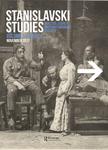版权所有:内蒙古大学图书馆 技术提供:维普资讯• 智图
内蒙古自治区呼和浩特市赛罕区大学西街235号 邮编: 010021

作者机构:Univ Missouri Dept Anthropol 200 Swallow Hall Columbia MO 65211 USA Univ Tulsa Dept Anthropol Tulsa OK 74104 USA Kent State Univ Dept Anthropol Kent OH 44242 USA Cleveland Museum Nat Hist Dept Archaeol Cleveland OH USA
出 版 物:《SCIENCE AND TECHNOLOGY OF ARCHAEOLOGICAL RESEARCH》 (Sci. Technol. Archaeol. Res.)
年 卷 期:2016年第2卷第1期
页 面:67-89页
学科分类:0601[历史学-考古学] 1303[艺术学-戏剧与影视学] 13[艺术学]
主 题:Cladistics Clovis Cultural transmission Paradigmatic classification Phylogeny
摘 要:Over the past several decades, archaeologists, anthropologists, linguists, and others who study cultural phenomena have begun to appreciate that methods developed to reconstruct the evolutionary, or phylogenetic, relationships among biological taxa can be used to create cultural sequences based on heritable continuity. One method in particular is cladistics, which creates hypothetical statements of relatedness-rendered as trees-based on the model and parameters used. To date, cladistics has been used to create phylogenetic orderings of a wide variety of cultural phenomena, including basketry and other textiles, ceramic vessels, stone projectile points, languages, folk tales, manuscripts, residence patterns, and political organization. Here we lay out the basic method of cladistics and show how it has formed the basis for long-term studies of the colonization of eastern North America during the Early Paleoindian period (ca. 13,300-11,900 calendar years before the present). Statement of Significance Archaeologists have long used changes in artifact form to measure the passage of time, the supposition being that if the changes are ordered correctly, a historical sequence of forms is created. This is correct, but oftentimes what archaeologists really want to know is which thing produced another thing as opposed to simply preceding it. This is an evolutionary sequence. Over the past several decades, not only archaeologists but also anthropologists, linguists, and others who study cultural phenomena have begun to use a suite of methods that were developed to reconstruct the evolutionary, or phylogenetic, relationships among biological taxa, one of which is cladistics. This marks a return to the questions on which the founding of much of anthropology rests: the writing of cultural lineages. This return is important to the growth and continued health of archaeology and anthropology because a reconstructed phylogeny helps guide interpretation of the evolution of traits in th